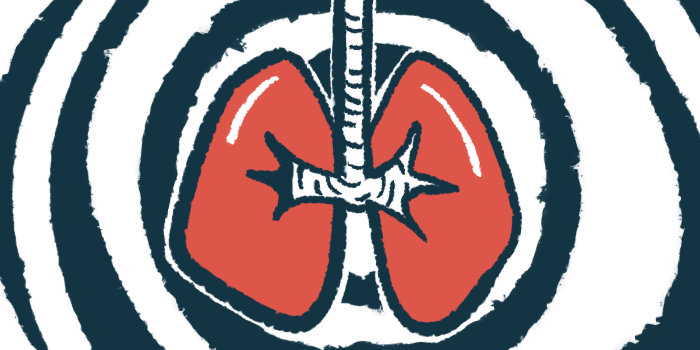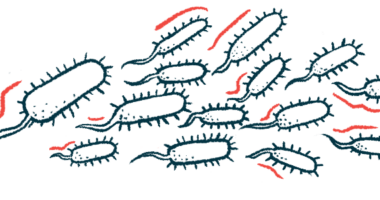Trikafta rapidly improves lung function in real-world study
Early LCI measurements can help assess patient response to therapy, researchers said

Trikafta significantly improved the lung function of cystic fibrosis patients after only two weeks of treatment, with the benefits sustained after nearly four months, according to real-world data from a single center in Austria.
“Early LCI [lung clearance index] measurements can help to assess the patient’s response to this high-cost therapy,” the researchers wrote. LCI is a test that involves measuring how long it takes for a tracer gas to be cleared from the lungs.
No significant improvements were seen with Orkambi, however.
The study, “Early and sustained improvements of lung clearance index from two to sixteen weeks of elexacaftor/ tezacaftor/ivacaftor therapy in patients with cystic fibrosis—a real world study,” was published in Frontiers in Pharmacology.
CF is caused by mutations in the CFTR gene, resulting in a faulty CFTR protein or no protein at all being produced. Since the protein controls the flow of water and salts through cells, CFTR mutations result in the excessive production of thick mucus in several organs.
CFTR modulators are a class of therapies that can improve the protein’s function in CF cases caused by specific mutations. Trikafta and Orkambi, both marketed by Vertex Pharmaceuticals, belong to this group.
While clinical trials have established their therapeutic potential, there’s limited data on their long-term, real-world effectiveness as measured with LCI, where higher values indicate poorer lung function.
Lung function with Trikafta
Researchers from Austria and Germany analyzed data from all the patients treated with Trikafta (from 2020-2022) or Orkambi (from 2013-2020) at the CF Centre Innsbruck, Austria. Trikafta is sold as Kaftrio in the European Union. LCI measurements were taken before and after initiating treatment — at two, four, and 16 weeks (about four months). Nitrogen was the tracer gas used in the LCI.
Lung function was also assessed by the percentage predicted forced expiratory volume in one second (ppFEV1), a measure of how much air can be exhaled in one second after a deep breath.
The analysis included 51 CF patients at different stages of lung disease. Twenty-five (median age, 24.2) received Trikafta and 26 Orkambi (median age, 19).
In agreement with the therapy’s approved indication, those treated with Orkambi were homozygous for the F508del mutation, meaning it was present in both copies of the CTFR gene. Among those on Trikafta, 13 had the F508del mutation in only one gene copy and 12 were homozygous.
Six patients in the Trikafta group had previously been treated with Orkambi and two with Symdeko (Symkevi in the EU), another CFTR modulator.
Due to age restrictions in licensing Trikafta, patients on it were older and had lower lung function than those given Orkambi, as shown by a lower ppFEV1 (median 53.8% vs. 76.6%) and higher LCI (13.1 vs. 9.6). All the patients completed the 16-week follow-up except one, who after four weeks of modulator therapy from an unknown cause.
Trikafta led to significant improvements in lung function within the first two weeks of treatment, as measured by both LCI (a decrease of 1.4 points) and ppFEV1 (an improvement of 8.3%). These improvements persisted by weeks four and 16, with LCI decreasing by 2.2 points and ppFEV1 increasing by 11.8% at 16 weeks.
“The benefits of [Trikafta] treatment started early and were maintained up to the end of the observation period,” the researchers wrote.
The improvements in LCI were seen regardless of whether patients had previously been treated with a CFTR modulator or not.
Patients with more severe disease at baseline, as shown by a higher LCI (above a median of 13.1), had the largest improvements after 16 weeks, a closer analysis revealed. LCI values after 16 weeks significantly correlated with baseline LCI, but no such relation was found for ppFEV1. Changes in LCI showed no association with baseline ppFEV1.
The Orkambi group didn’t show significant differences in LCI or ppFEV1. However, a trend for LCI decline — by a median of -0.8 — was seen at week 16.
The only subgroup with a detectable response to Orkambi were those whose ppFEV1 was below 76.6% at baseline, who showed a median ppFEV1 increase of 5.4% at the study’s end.
“Our data from a real world, post-approval setting showed clinically relevant and statistically significant improvements of ppFEV1 and LCI already after 2 weeks of [Trikafta] treatment, with benefits maintained [four] and 16 weeks after the first dose,” the researchers wrote. “Measuring baseline LCI could help in estimating which patients might benefit the most from CFTR modulator therapy.”
The scientists said the single-center design without a control group was a limitation of the study.








